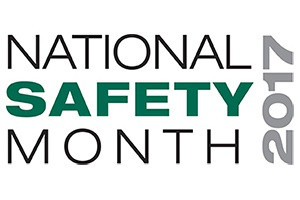 Even the best risk management strategies leave some room for workplace injuries. When the employee comes back, you need to make sure you have the best possible return-to-work plan too. We’ve highlighted the benefits to the employee, but your insurance company expects it as well. In fact, an underwriter’s pricing decision may be impacted by whether or not you have a bona fide return-to-work plan.
Even the best risk management strategies leave some room for workplace injuries. When the employee comes back, you need to make sure you have the best possible return-to-work plan too. We’ve highlighted the benefits to the employee, but your insurance company expects it as well. In fact, an underwriter’s pricing decision may be impacted by whether or not you have a bona fide return-to-work plan.
Here are 5 important considerations for your organization’s return-to-work program…
1. Written Program
Document, document, document! You need a written program that details your position on return-to-work and you need to stick to it. This needs to be done 100% of the time.
2. Restriction Documentation and Physician Approval
There are two basic ways to go about work-related injury restrictions – a reactive or a proactive approach.
A reactive approach is to wait for the employee to be seen, then bring back the list of restrictions from the treating physician. While it is important to document what restrictions the employee has, letting the doctor tell you what the employee can’t do can be detrimental to your return-to-work program. In some cases, the employee may exaggerate the difficulty of his position resulting in overly restrictive restrictions.
A proactive approach would be to obtain physician approval of the job the employee will be doing. This can be accomplished by sending a detailed job description with the injured worker to be reviewed by the treating physician at the same time the employee’s injury is being assessed. This description should provide specific indicators of how much an employee may be required to stand, lift, or other key factors. Click here for a sample form that you may tailor to your specific environment.
3. Return-To-Work Agreement
Once you have from the physician the restrictions – either in the format of what the employee can do or cannot do – work with the appropriate personnel within your organization to find work that fits within the restrictions assigned. It’s critically important that management, the employee, and the employee’s supervisor are on the same page as to what the employee is able to do. Remember, the worker doesn’t have to be returned to the same job…or even the same department in most cases. (Union environments may have contract language that governs return-to-work assignments.)
It is recommended you make the offer of the job to the employee in writing, detailing what the restrictions are. Have the employee and the supervisor sign off that they understand these restrictions. Another key point in Indiana is that in instances of a documented return-to-work program, should the employee refuse the modified assignment, they are not eligible for the indemnity or wage loss benefits.
4. Orientation Of Injured Worker
Now that all parties have agreed to the duties, the injured worker should be trained on the process that is expected. This is critically important if the employee is being assigned transitional duty, which is a job assignment different from their normal duties.
5. Regular Review
An employee who is working with restrictions should be seen by their medical provider every 30 days, at a minimum. If the physician has set appointments longer than that while maintaining restrictions, work with your adjuster to determine why this has happened and to have the employee seen sooner. As restrictions are lifted, the modified or transitional duty assignment should be adjusted to keep up with the new restrictions, a new agreement issued, training if applicable, etc.
Keep these 5 considerations in mind as you develop a new return-to-work program or set up to improve your current efforts!




